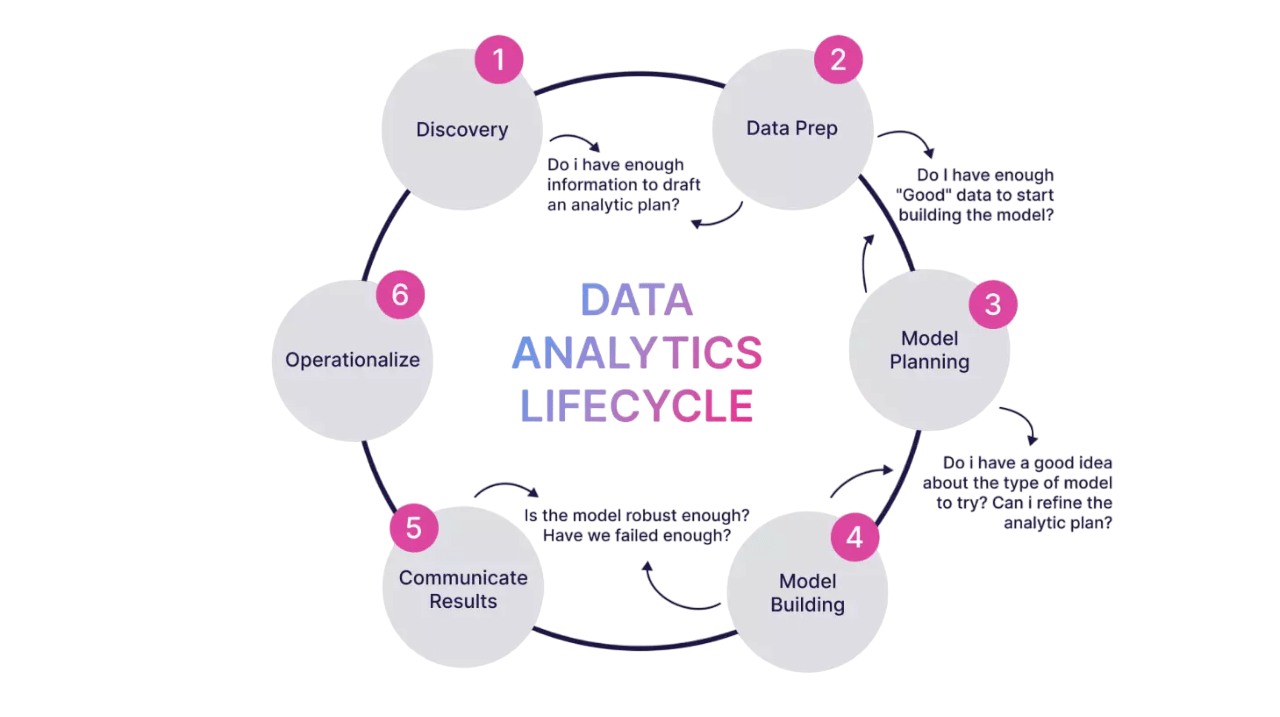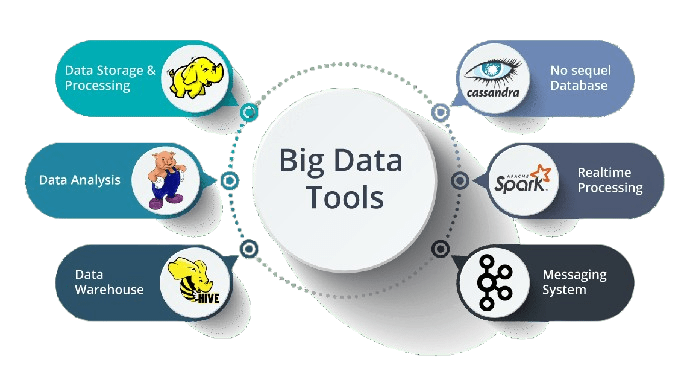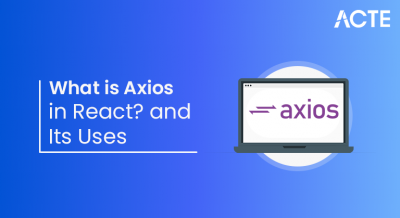
- Introduction to the Data Ecosystem
- Defining Data Science
- What is Data Analytics?
- Understanding Big Data
- Key Differences and Overlaps
- Tools and Technologies Used
- Required Skills for Each Field
- Typical Job Roles and Responsibilities
- Industry Applications
- Choosing the Right Career Path
- Market Demand and Trends
- Final Thoughts and Recommendations
Introduction to the Data Ecosystem
The modern world runs on data. From personalized marketing to pandemic prediction, data is central to the way industries, governments, and individuals make decisions. But with the explosion of data in size, complexity, and speed, new disciplines have emerged to manage and extract value from it. Three commonly discussed terms, Data Science, Data Analytics, and Big Data are often used interchangeably, though they have distinct meanings, skill requirements, and roles in the data ecosystem. Understanding the similarities, differences, and career pathways associated with each is essential for anyone entering the data domain. This article offers a comparative overview of these Data Science vs Data Analytics vs Big Data fields, equipping you with the knowledge to make informed decisions about your career and learning path.
Do You Want to Learn More About Web Developer? Get Info From Our Web Developer Courses Today!
Defining Data Science
Data Science is an interdisciplinary field focused on extracting meaningful insights from structured and unstructured data using techniques from mathematics, statistics, computer science, and domain knowledge. It encompasses the entire data pipeline from data collection to modeling to deployment.
Key Elements of Data Science:
- Data Wrangling
- Exploratory Data Analysis (EDA)
- Predictive Modeling
- Machine Learning & AI
- Model Deployment
- Data Visualization
Data Scientists use algorithms and statistical models to uncover patterns and build predictive systems. They ask open-ended questions like, “What will happen in the future?” or “Why is this happening?”
What is Data Analytics?
Data Analytics refers to the process of examining structured and unstructured data sets to draw actionable conclusions. It’s typically more focused and descriptive, answering questions like, “What happened?”, “When?”, and “How often?”
Types of Data Analytics:
- Descriptive Analytics: Summarizes historical data (e.g., sales reports)
- Diagnostic Analytics: Investigates the cause of outcomes (e.g., decline in user engagement)
- Predictive Analytics: Forecasts future outcomes
- Prescriptive Analytics: Recommends actions based on analysis

Unlike data science, which often builds models and algorithms, data analytics is more about applying existing tools to derive insights and support decision-making.
To Earn Your Web Developer Certification, Gain Insights From Leading Data Science Experts And Advance Your Career With ACTE’s Web Developer Courses Today!
Understanding Big Data
Big Data is a term used to describe data that is too big, fast, or complex for conventional data processing to manage. It is not a specific job function or an analytical process. The 5 Vs. are five critical characteristics to usually describe Big Data. Volume represents the amount of data produced, from terabytes to petabytes. Velocity describes the speed, or the pace at which the data is created and processed, which is either in near real-time or real-time. Variety includes the data types produced: structured, semi-structured, or unstructured. Veracity refers to the uncertainty, inconsistencies in data quality. Finally, as it pertains to Big Data, Value demonstrates the process of extracting adequate insights about business to utilize a huge amount of structured and unstructured data. Organizations will use current technologies like Hadoop, Spark, NoSQL databases, and Cloud technologies on distributed systems to easily be able to manage and analyze Big Data. These technologies offer solutions to manage and analyze massive data sets that are impossible for traditional processing systems.
Key Differences
| Aspect | Data Science | Data Analytics | Big Data |
|---|---|---|---|
| Purpose | Predictive modeling and decision-making | Insight generation from existing data | Managing and processing massive datasets |
| Approach | Exploratory, statistical, algorithmic | Descriptive and diagnostic | Infrastructure and performance-centric |
| Outcome | Predictive insights, AI models | Business reports, dashboards | Efficient data storage and access |
| Tools | Python, R, TensorFlow, MLlib | Excel, SQL, Power BI, Tableau | Hadoop, Spark, Hive, Kafka |
| Data Types | Structured & unstructured | Primarily structured | Structured, semi-structured, unstructured |
Overlap:
- Data Scientists may use Big Data technologies to process datasets for modeling.
- Data Analysts use results from Big Data systems in dashboards.
- All roles require some level of statistical and technical proficiency.
Tools and Technologies Used
Each field leverages specific tools optimized for its core functions:
Data Science Tools:
- Languages: Python, R
- Libraries: scikit-learn, pandas, NumPy, TensorFlow, Keras
- Platforms: Jupyter Notebook, RStudio
- Visualization: Seaborn, Plotly, Matplotlib
Data Analytics Tools:
- BI Tools: Tableau, Power BI, QlikView
- Spreadsheets: Excel, Google Sheets
- Databases: SQL, PostgreSQL, MySQL
- ETL Tools: Alteryx, Talend
Big Data Tools:
- Storage: HDFS, Amazon S3
- Processing: Apache Spark, Hadoop MapReduce, Flink
- Databases: NoSQL (MongoDB, Cassandra), Hive
- Streaming: Apache Kafka, Storm

Each stack reflects the unique needs speed and scale in Big Data, interactivity in Analytics, and complexity in Data Science.
Required Skills for Each Field
Data science professionals need a solid grounding in statistics and probability, along with skills in programming languages like Python and R. They should understand their field well enough to turn complex analyses into clear stories. They also need to be comfortable with basic data engineering tools like SQL and Spark and have a grasp of machine learning and deep learning concepts. On the other hand, data analysts depend on their advanced Excel and SQL skills. They often create interactive dashboards using business intelligence tools. With some knowledge of statistical techniques, they must know key business performance indicators and present their findings clearly in well written reports. Big data professionals frequently implement solutions on cloud services such as AWS, Azure, or GCP and use distributed computing frameworks like Hadoop and Spark. They create and maintain data pipelines, handle real-time data processing, and write Shell, Python, or Scala scripts to automate workflows. To translate technical skills into practical insights, strong soft skills like teamwork, critical thinking, and problem-solving are essential in all three areas.
Typical Job Roles and Responsibilities
Data Scientist:
- Build and validate predictive models
- Perform complex statistical analysis
- Communicate findings to stakeholders
- Collaborate with engineering teams to deploy models
- Work with unstructured data sources
Data Analyst:
- Clean and interpret data
- Create visual reports and dashboards
- Perform A/B testing and generate insights
- Support business decisions with data-backed recommendations
- Use SQL and Excel for data extraction
Big Data Engineer/Architect:
- Design and maintain scalable data architectures
- Implement ETL processes for massive datasets
- Optimize performance of storage and processing systems
- Ensure data security and compliance
- Integrate data from various sources
Each role plays a critical part in turning data into value.
To Explore Web Developer in Depth, Check Out Our Comprehensive Web Developer Courses To Gain Insights From Our Experts!
Industry Applications
Data Science Applications:
- Healthcare: Disease prediction, genomics
- Finance: Credit scoring, algorithmic trading
- E-commerce: Recommendation engines
- Marketing: Churn prediction, sentiment analysis
Data Analytics Applications:
- Retail: Sales forecasting, customer segmentation
- HR: Workforce analytics, attrition trends
- Manufacturing: Production quality analysis
- Government: Policy impact assessments
Big Data Applications:
- Telecom: Network traffic optimization
- Media: Real-time content recommendations
- Smart Cities: IoT data management
- Transportation: Route and fuel optimization
Data is a valuable asset in every sector. The challenge lies in choosing the right methodology to unlock its power.
Choosing the Right Career Path
Your ideal path depends on your interests, background, and long-term goals:
| Interest Area | Recommended Path |
|---|---|
| Strong in Math & Programming | Data Science |
| Interested in Business + Visualization | Data Analytics |
| Love Systems & Large-Scale Data | Big Data Engineering |
| Prefer Research & Academia | Data Science |
| Want to enter quickly with fewer coding skills | Data Analytics |
Education Tip:
Structured and unstructured data, due to its complex nature and reliance on advanced statistics and machine learning methods, often requires a master’s degree or specialized education. In contrast, Data Analytics is more accessible and can often be pursued through short-term certification courses. This makes it easier to enter the field quickly. Since jobs involving Big Data usually require working with technical tools and large systems, candidates with a background in computer science or information technology are typically preferred.
Market Demand and Trends
The job market for data professionals is continually thriving, with each of the roles in the data profession being highly impactful to the contemporary digital economy. Data Scientists are extraordinarily visible and welcomed with open arms to great success, earning themselves a spot on LinkedIn’s Most Promising Jobs. Data Analysts are continually sought in all sectors and domains of work, particularly in small to medium-sized organizations that are data-driven or aspire to become data-driven. Big Data Engineers are especially sought in cloud-native and larger-scale organizations that are typically hubs for heavy and complex buildouts involving large data the requirement for people to manage these built-out architectures is increasing in demand. Notably, the underlying trends are moving towards a convergence of roles, which indicates that many data practitioners identify and operate over all three data descriptors of science, analytics, and engineering. Consequently, we are seeing greater adoption of AI and AutoML, leading towards increased automation in data workflows with minimal human intervention and executive features that significantly reduce hours of manual labor that previously directed poor data outcomes.
Final Thoughts and Recommendations
Data Science vs Data Analytics vs Big data becomes the new oil, it is crucial to understand the differences between big data, data analytics, and data science. Each area has its role, tools, and career path. Big Data deals with handling and processing large, rapidly changing datasets. Data Analytics focuses on creating reports and finding insights. Data Science aims to make predictions and build models. It’s best to view them as connected layers within the data ecosystem instead of separate choices. All three are important for companies that want to be truly data-driven. Your background may influence where you start in your career planning. Students are encouraged to begin with data analytics as a foundation before choosing a specialization. IT professionals can move into Big Data by learning about distributed systems and cloud platforms. Statisticians and math majors are well-suited to explore Data Science and experiment with machine learning. In today’s information-driven society, these Data Science vs Data Analytics vs Big Data fields are powerful tools for change, not just jobs. Learn one, master it, and continue to grow in all of them.



